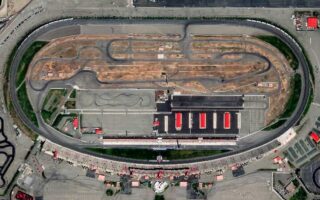Revving engines, swirling tires, and the unmistakable scent of burning rubber—drift car racing is an exhilarating motorsport that blends precision driving with creative flair. Originating in the mountainous streets of Japan, this dynamic discipline has evolved into a global phenomenon, captivating fans and drivers alike with its unique blend of skill, style, and strategy. In this article, we will delve into the world of drift car racing, exploring its rich history, the technical aspects that distinguish it from traditional racing, and the vibrant culture that surrounds the sport. Whether you’re a seasoned enthusiast or a curious newcomer, join us as we navigate the exhilarating twists and turns of this adrenaline-fueled pursuit.
Table of Contents
- Exploring the Thrill of Drift Car Racing Culture
- Mastering the Art of Drifting Techniques and Strategies
- Essential Gear and Vehicle Modifications for Beginners
- Safety Protocols and Best Practices on the Drift Track
- Q&A
- In Retrospect
Exploring the Thrill of Drift Car Racing Culture
Drift car racing is not merely a motorsport; it’s a vibrant culture that embodies excitement, skill, and community. The heart of drifting lies in the art of oversteering, allowing drivers to navigate turns with controlled slides. This unique technique transforms the ordinary track into a stage where speed meets style. Enthusiasts gather at local events and pro competitions to celebrate this dynamic sport, forming a tight-knit community. Key aspects of drift culture include:
- Customization – Vehicles are often heavily modified, with unique paint jobs and performance-enhancing upgrades.
- Social Media Presence – Platforms like Instagram and TikTok serve as showcases for stunning visuals and thrilling clips.
- Community Events – Gatherings offer fans a chance to meet drivers, share techniques, and participate in ride-alongs.
The adrenaline rush experienced during a drift event is electric, enhanced by the roaring engines and the smell of burning rubber. For spectators, it’s an exhilarating experience, witnessing drivers push the limits of their cars while showcasing incredible precision. Drift events often feature categories for various skill levels, encouraging newcomers to experience the thrill firsthand. The following table highlights popular drift car models frequently seen on the tracks:
| Car Model | Notable Features | Common Modifications |
|---|---|---|
| Nissan Silvia S15 | Lightweight, rear-wheel drive | Turbo upgrade, coilover suspension |
| BMW M3 E30 | Classic design, excellent handling | Engine swap, wide-body kits |
| Ford Mustang | Powerful V8, great torque | Supercharger, differential upgrades |
Mastering the Art of Drifting Techniques and Strategies
Drifting isn’t just about steering; it’s an intricate dance between the driver and the vehicle. Mastering this art requires an understanding of weight transfer, which plays a pivotal role in executing smooth drifts. By shifting the car’s weight during turns, you can maintain control and direction. When approaching a corner, remember to:
- Brake briefly to transfer weight to the front tires, enhancing grip.
- Accelerate smoothly to break traction on the rear tires.
- Use counter-steering to keep the rear in check and guide the car through the drift.
Successful drifting also hinges on selecting the right tires and understanding the mechanics of your car. Ensure your setup can offer sufficient grip while allowing for some slip. It’s crucial to tune your car for drifting by considering adjustable suspension settings and weight distribution. Below is a concise comparison of tire types suitable for drifting:
| Tire Type | Grip Level | Durability |
|---|---|---|
| Street Tires | Moderate | High |
| Drift Tires | Low | Medium |
| Racing Tires | High | Low |
Essential Gear and Vehicle Modifications for Beginners
To jumpstart your journey into the world of drift car racing, having the right gear is essential for both safety and performance. Consider investing in high-quality safety equipment such as a racing helmet, fire-resistant suit, and gloves. These items not only protect you during adrenaline-pumping maneuvers but also enhance your confidence on the track. Don’t overlook the importance of supportive footwear; racing shoes designed for grip and comfort can make a significant difference in your control over the pedals and lateral movement.
When it comes to vehicle modifications, certain upgrades are pivotal for beginners aiming to master the art of drifting. A limited-slip differential is crucial for maintaining traction while allowing for smooth control during skids. Additionally, tuning your suspension with coilovers can drastically improve handling dynamics, helping you maintain balance during sharp turns. Other recommended modifications include lightweight racing seats, which not only provide better support and comfort but also reduce the overall weight of the car, enhancing performance.
| Gear/Modification | Purpose |
|---|---|
| Racing Helmet | Protects the head during impacts |
| Fire-Resistant Suit | Safety against flames in case of fire |
| Limited-Slip Differential | Improves traction during drifting |
| Coilover Suspension | Enhances handling and stability |
Safety Protocols and Best Practices on the Drift Track
Drift track safety is of paramount importance to ensure a thrilling yet secure experience for both participants and spectators. Before hitting the track, drivers should undergo thorough checks of their vehicles to confirm that safety equipment is functioning correctly. Essential components to inspect include:
- Seat Belts: Ensure all harnesses are securely fastened and meet safety standards.
- Helmet: A DOT or Snell-approved helmet is crucial for head protection.
- Roll Cage: Verify that the roll cage is properly installed to withstand impacts.
- Fire Extinguisher: A functional fire extinguisher should be within reach in case of emergencies.
In addition to vehicle checks, adhering to established protocols on the track can significantly reduce risks. These practices help maintain order and enhance the overall drifting experience:
| Best Practices | Description |
|---|---|
| Communication | Use hand signals and flags to indicate intentions while drifting. |
| Awareness | Always be conscious of your surroundings and other drivers. |
| Respect Limits | Know your car’s capabilities and never push beyond safe parameters. |
| Cooldown Laps | Allow your vehicle to cool down to prevent overheating after intense sessions. |
Q&A
Q: What is drift car racing?
A: Drift car racing is a high-octane motorsport where drivers intentionally oversteer, causing their rear wheels to lose traction while maintaining control through corners. This style of racing not only showcases the driver’s skill in managing a sideways slide but also emphasizes the car’s performance, often adorned with striking visuals and intricate modifications tailored for this unique competition.
Q: How did drift car racing originate?
A: Drift car racing traces its roots back to the mountain roads of Japan in the late 20th century. Enthusiastic drivers began experimenting with techniques to slide their cars through turns, leading to a culture of street racing and competition known as “drifting.” It was formalized into an organized sport in the 1990s and gained international fame, especially through events like Formula Drift.
Q: What are the essential modifications for a drift car?
A: To transform a standard car into a drift machine, several modifications are crucial. These include a limited-slip differential for better traction control, stiffer suspension for improved handling, and upgraded tires that can withstand the wear and tear of drifting. Performance enhancements, such as turbochargers or engine swaps, can also be made to increase power, all while ensuring safety features like roll cages and racing seats are incorporated.
Q: Are there any specific skills one should develop to become a good drift racer?
A: Absolutely! An aspiring drift racer should focus on developing several critical skills: understanding vehicle dynamics, mastering throttle control, and honing the ability to manage steering inputs. It is also beneficial to learn how to read track conditions and anticipate how the car will behave in various scenarios. Participating in drift schools or taking lessons from experienced drivers can significantly accelerate the learning curve.
Q: Is drift racing safe?
A: Like any motorsport, drift racing carries inherent risks, but many safety measures are in place to minimize them. Events are often conducted on closed tracks under guided supervision with medical personnel on standby. Drivers typically wear protective gear, including helmets and fire-resistant suits. Furthermore, regular checks and standards ensure that cars are safe for competition.
Q: What can spectators expect at a drift racing event?
A: Spectators at drift racing events can anticipate a thrilling spectacle filled with roaring engines, billowing tire smoke, and dazzling displays of car control. Events often feature professional drivers performing intricate maneuvers in tandem, while the atmosphere is further enlivened by loud music, food vendors, and enthusiastic commentary that keeps the energy high throughout the day.
Q: How can one get started in drift racing?
A: Getting started in drift racing involves a few steps. First, it’s advisable to familiarize yourself with basic car control and handling. Joining a local car club can provide valuable networking opportunities and insights. Participating in beginner-friendly drift events or track days allows newcomers to practice their skills in a controlled environment. Over time, aspiring drivers can progressively build their cars and technique to compete in various local or national events.
Q: What is the future of drift car racing?
A: The future of drift car racing appears vibrant and full of potential. With advancements in electric vehicles and sustainable technologies, we may see a new era of drifting that combines performance with environmental consciousness. Additionally, the sport continues to attract a younger audience through social media and video platforms, fostering new talent and creative expressions within the community. The fusion of traditional racing elements with modern innovations is likely to reshape the landscape of drift car racing in the coming years.
In Retrospect
As the engines rev down and the dust settles, drift car racing stands as more than just a spectacle; it is an art form that blends precision, passion, and adrenaline in a dance around the track. With each slide and turn, drivers not only test their skills but also push the boundaries of their machines, creating a captivating display that leaves enthusiasts breathless. Whether you’re a seasoned fan or a curious newcomer, the world of drift racing invites you to appreciate the intricacies behind the drift and the community that fuels this motorsport. So, whether you find yourself at the sidelines, cheering for your favorite driver, or dreaming of conquering the course yourself, remember that each drift tells a story—a fusion of science and spectacle that will continue to carve its mark on the automotive landscape for years to come. Embrace the thrill, and may the drift forever be with you.


